First things first: this post is strictly about aviation. It is not about politics, and we ask that comments and discussion focus on the unique aviation aspect of this event — specifically the Ilyushin Il-96.
A Rare Arrival on American Soil

On Thursday, 14 August 2025, an Ilyushin Il-96-300PU — the VIP transport variant of Russia’s long-range four-engine Il-96 airliner — touched down at Ted Stevens Anchorage International Airport (ANC) just after sunrise.
Operating as Special Flight Detachment Rossiya 381 (RSD381), registration RA-96023, the jet departed Moscow Vnukovo (VKO) at 0750 local time, arriving in Anchorage at 0641 local time. The flight took a polar route across the Arctic to reach Alaska.
Such a routing required special airspace exemptions, as Russian-registered aircraft remain banned from American airspace under current restrictions. These exceptions are rarely granted, making today’s arrival particularly significant.
Multiple Russian Aircraft Heading to ANC
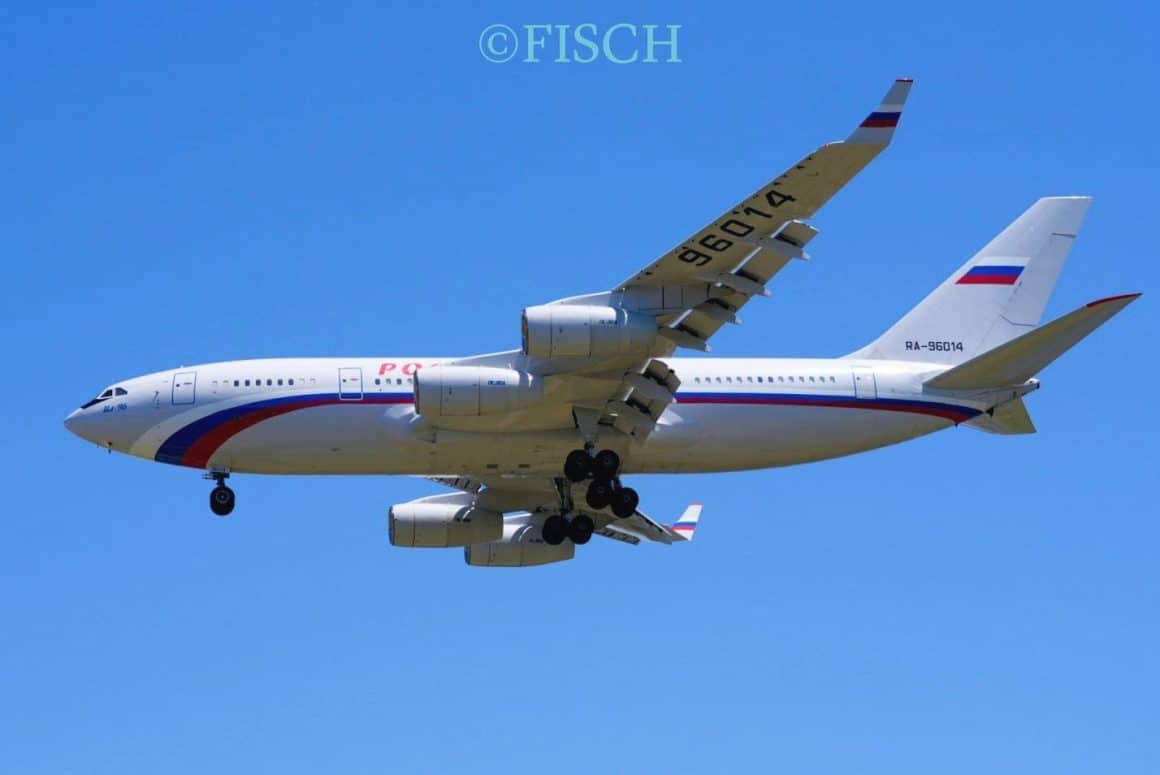
While online speculation suggested President Vladimir Putin might have been aboard, the Kremlin denied this, stating that the flight carried an advance team and senior members of the Russian delegation, along with forward support and security personnel.
At the time of writing, at least three other Russian government flights — including two additional Il-96-300s (RSD171 and RSD308) — were inbound to ANC. A Bombardier Global Express (JTC9580) was also en route from Vnukovo.
It’s worth noting that, if President Putin were to arrive, Elmendorf — not ANC — would be the likely landing point. The same applies to US President Donald Trump, who is expected to arrive at Joint Base Elmendorf-Richardson (JBER) for Friday’s summit.
Summit Context and Geographic Significance
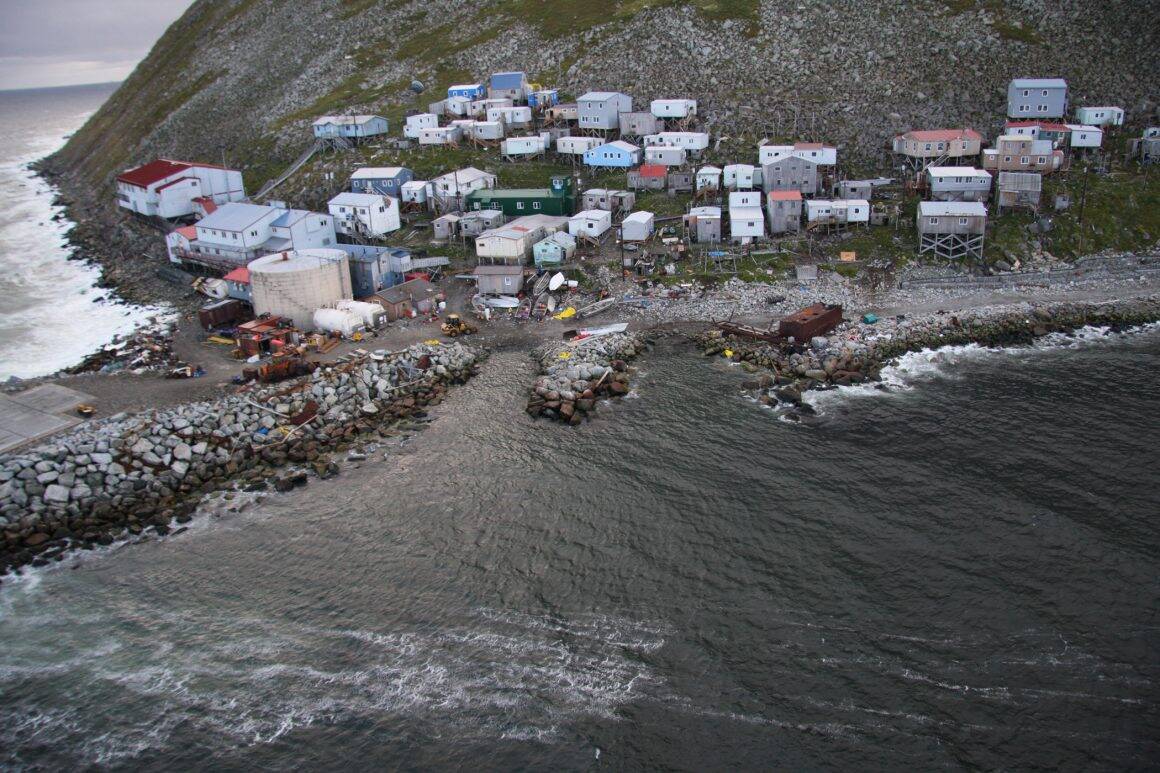
The Trump–Putin meeting, set for 15 August at 1130 local time (1530 EDT), will take place at JBER, which is located roughly 14 miles northeast of ANC and just over eight miles from downtown Anchorage. Strategically, Elmendorf is only about 630 miles from Russia’s Chukotka region.
Only 2.4 miles and the International Date Line separate Russia’s Big Diomede Island from America’s Little Diomede Island in the Bering Strait, underscoring Alaska’s geographic proximity to Russia.
This will be the first time Trump and Putin have met on US soil, and the first time Putin has visited the United States in a decade.
The Aircraft: “Flying Kremlin” vs. Air Force One
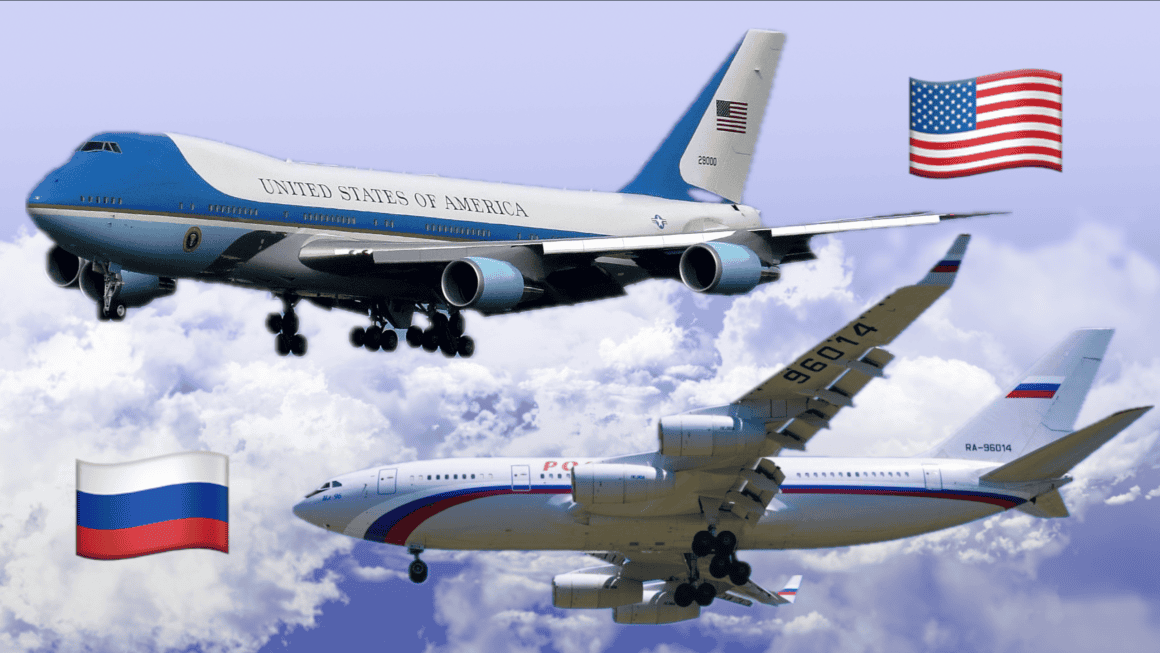
The Il-96-300PU (PU = Punkt Upravleniya, “Command Post”) is the Russian counterpart to the United States’ VC-25A Air Force One. Though about 50 feet shorter, the Il-96-300PU’s wingspan is slightly longer than that of the VC-25A.
Base Aircraft
- Ilyushin Il-96-300PU: Based on the Ilyushin Il-96-300, first introduced in the early 1990s, powered by 4 × Aviadvigatel PS-90A turbofans, entirely Russian-built.
- Boeing VC-25A: Based on the Boeing 747-200B, first introduced in 1990, powered by 4 × GE CF6-80C2B1 turbofans, globally recognized.
Size & Performance
| Feature | Il-96-300PU | VC-25A |
| Length | 181 ft 6 in (55.3 m) | 231 ft 10 in (70.7 m) |
| Wingspan | 197 ft 2 in (60.1 m) | 64.4 m (211 ft 5 in) |
| MTOW | 551,000 lb (~250,000 kg) | 833,000 lb (~375,000 kg) |
| Range | 6,835 mi (~11,000 km) | 7,800 mi (~12,550 km) |
| Cruise Speed | Mach 0.80 (~850 km/h) | Mach 0.84 (~900 km/h) |
| Passenger Capacity (commercial version) | ~262–300 | ~400+ (commercial), ~70–100 in VC-25A VIP layout |
Special Modifications
- Il-96-300PU: Secure communications, encrypted data links, conference rooms, private offices, medical facilities, defensive countermeasures, hardened electronics for EMP resistance, possible in-flight refueling.
- VC-25A: EMP-hardened, secure satellite comms, aerial refueling, anti-missile systems, onboard medical suite, and extensive staff capacity.
Il-96 Visits to the US: Rare but Not Unprecedented
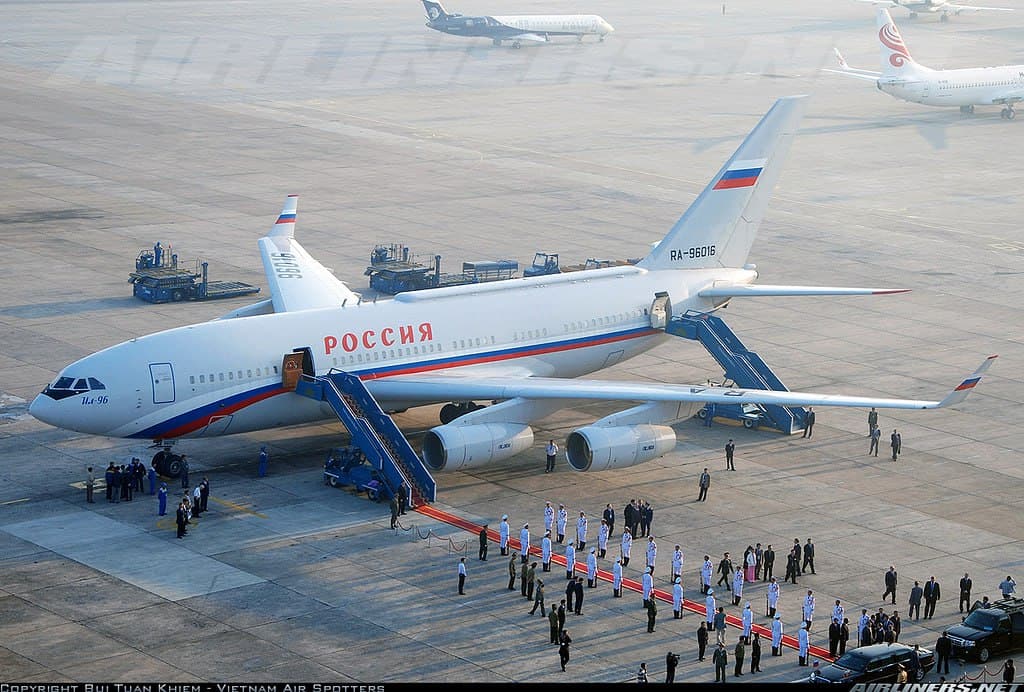
The Ilyushin Il-96-300 is an uncommon visitor to the United States, but not entirely absent:
- Routine Diplomatic Flights: Several times a year for diplomatic staff rotations (per Russian MFA).
- Notable Flights: March 2022 (Washington Dulles), June 2023 (New York/DC), December 2024 (New York/DC), June 2025 (New York).
Political and logistical constraints — particularly the airspace ban — mean that each appearance is an aviation event in its own right.
Ted Stevens Anchorage International Airport and Joint Base Elmendorf-Richardson

Ted Stevens Anchorage International Airport is a world-class cargo hub, but VIP arrivals of Russian four-engine aircraft are rare. Joint Base Elmendorf–Richardson (JBER) in Anchorage, Alaska, was formed in 2010 by merging Elmendorf Air Force Base with Fort Richardson. The installation spans approximately 25,899 hectares and serves as a major joint military hub. It hosts key units including the 673rd Air Base Wing, the 3rd Wing, the 176th Wing, and the headquarters for Alaskan Command, Alaskan NORAD Region, and other critical operational commands.
The 673rd Air Base Wing supports over 5,500 joint military and civilian personnel, operates one of the Air Force’s largest hospital facilities in the Pacific region, and provides comprehensive medical services to more than 35,000 servicemembers, dependents, and veterans. It also manages and maintains base infrastructure valued at roughly $11.4 billion.
Strategically located at the intersection of the Arctic and Asia-Pacific regions, JBER plays a vital role in air sovereignty, combat readiness, Arctic operations, and rapid global mobility. Its dual Air Force–Army structure enables integrated joint training, large-scale exercises, and rapid deployment capabilities unmatched by most U.S. installations.
JBER features two main runways:
- RWY 06/24: 10,000 ft (~3,048 m)
- RWY 16/34: 7,500–8,033 ft, being extended to 10,000 ft (~2,284–2,447 m)
Elmendorf is no stranger to hosting high-profile historic events. It hosted the 1971 meeting between President Nixon and Emperor Hirohito, the first-ever meeting between a US president and a reigning Japanese emperor.

| Feature | Details |
|---|---|
| Base | Joint Base Elmendorf–Richardson (JBER), Anchorage, Alaska |
| Total Area | ~25,899 hectares |
| Host Units | 673rd Air Base Wing, 3rd Wing, 176th Wing, Alaskan Command HQ, Alaskan NORAD Region HQ, other joint operational commands |
| Personnel Supported | ~5,500 joint military and civilian personnel |
| Medical Support | Services for ~35,000 servicemembers, dependents, and veterans |
| Infrastructure Value | ~$11.4 billion |
| Runway 06/24 | ~3,048 m (~10,000 ft), asphalt |
| Runway 16/34 | Historically ~2,284–2,447 m (7,500–8,033 ft), extended in 2023 to 10,000 ft; final ILS installation pending |
| Extension Project | +2,900 ft; ~$309M; includes new taxiways, shoulders, lighting, grading, drainage; southern threshold shifted ~400 ft north; northern expansion ~2,500 ft underway |
| Strategic Role | Air sovereignty, Arctic operations, rapid global mobility, joint Army–Air Force training and deployment hub |
Flight Restrictions
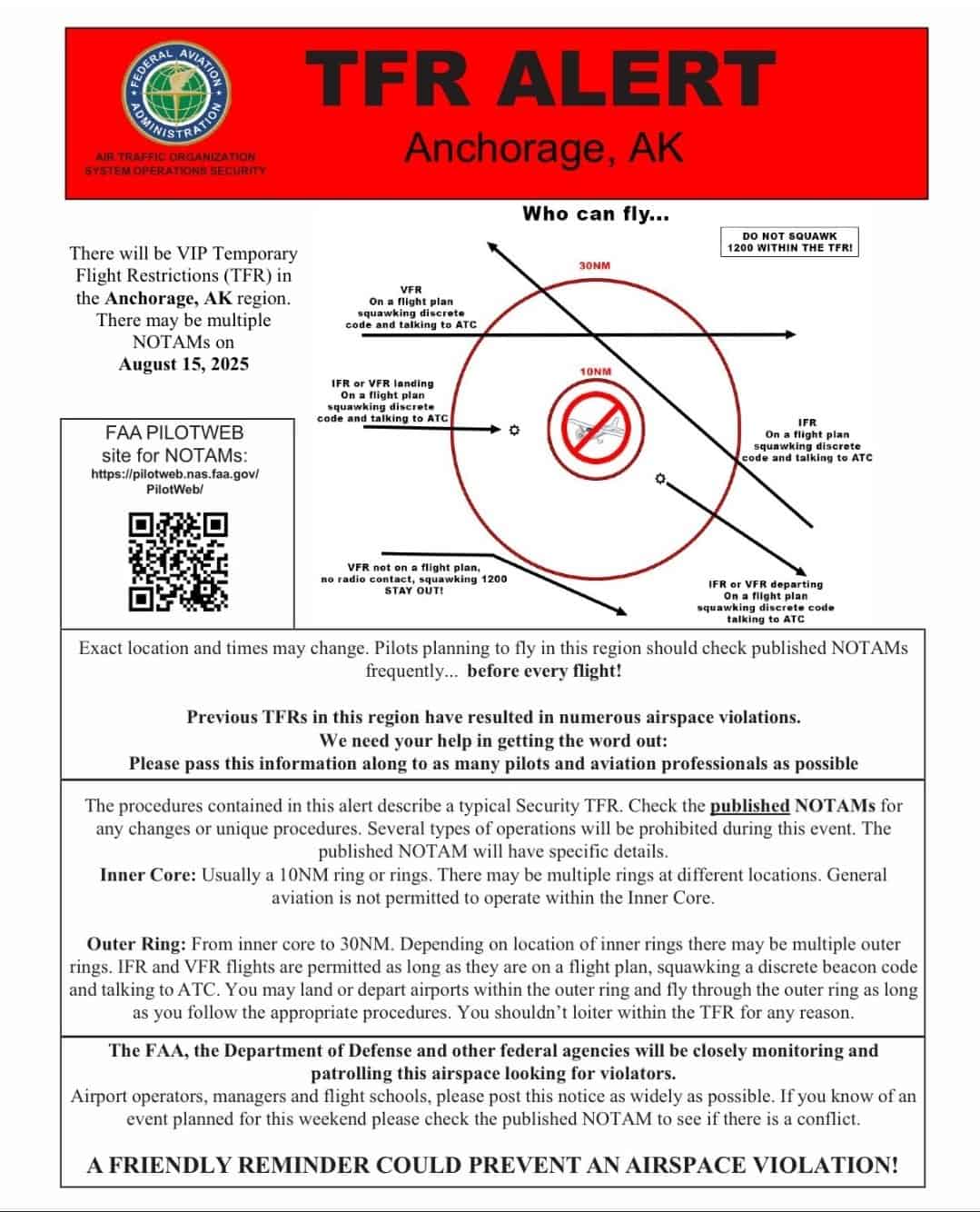
The FAA has issued a Temporary Flight Restriction (TFR) for a 30-mile radius around Anchorage from 0915 to 1615 local time on Friday, 15 August. Commercial traffic at ANC should remain largely unaffected, but all pilots are urged to file flight plans and maintain radio contact. NORAD warns it will respond to any unauthorized aircraft entering the TFR.
A Vanishing Type
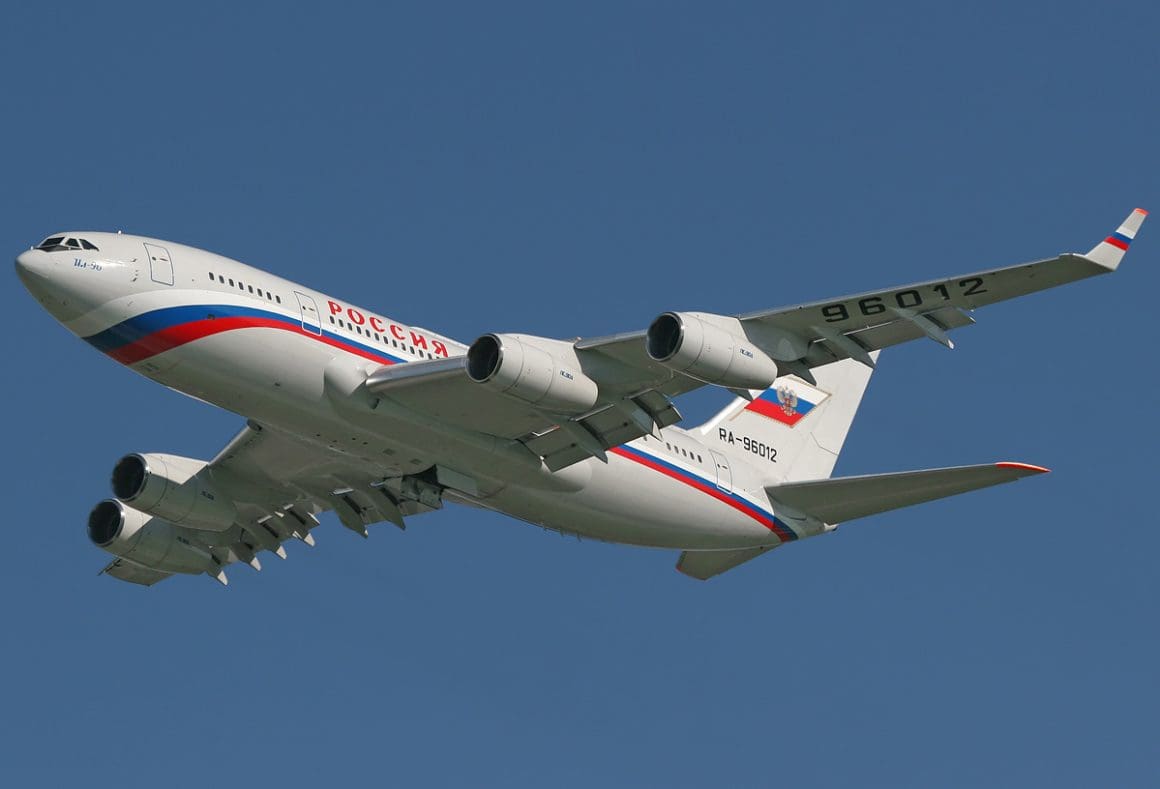
In the commercial world, the Ilyushin Il-96 is now a near-extinct species. Only Cubana still lists the type in its fleet, and even in their case, only two of the type exist (and only one is listed as active).
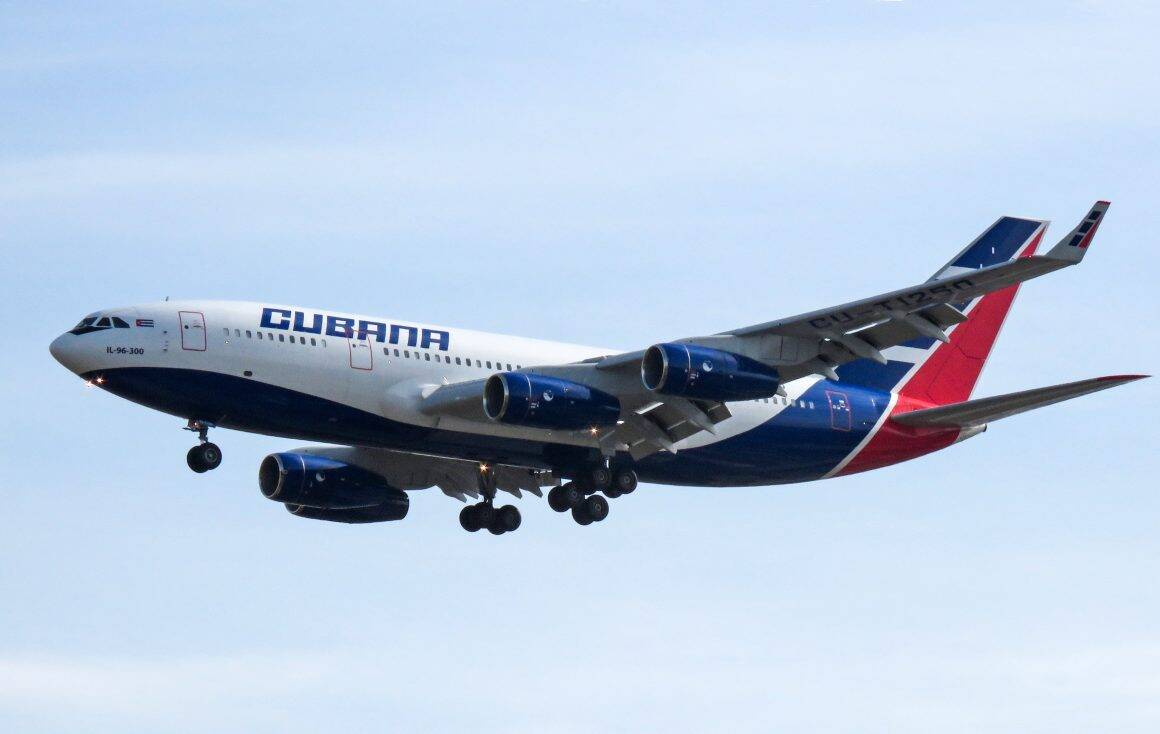
In Russia, just 18 Il-96-300s remain in active service, including 11 active airframes with the Russian government, tasked with official transport duties.
Born in the twilight years of the Soviet Union, the Il-96 was their answer to Western long-haul giants from Airbus and Boeing. It combined the spirit of Cold War engineering with ambitions of global reach, yet it never gained the international foothold its designers envisioned. That history makes its arrival in Anchorage not just rare, but a fleeting echo of another aviation era.
Whatever the geopolitical backdrop, the sight of a four-engine Russian widebody touching down at ANC in 2025 is a gift for spotters and us avgeeks. Even in an age ruled by efficient twin-engine airliners, an aircraft can still catch you off guard and spark a sense of wonder. For a brief moment on the tarmac, history, technology, and human curiosity converge, proving that aviation can transcend borders, bridging differences to unite those who share a passion for flight.
